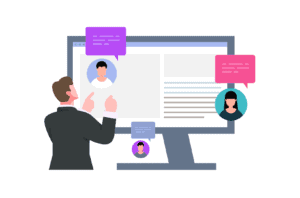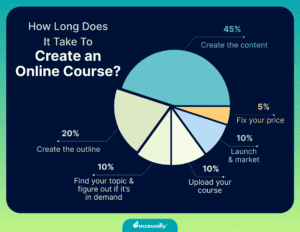Introduction and Overview
Creating an online course isn’t just about putting content out there – it’s about crafting an experience that transforms your students’ lives. As course creators, we have the incredible opportunity to shape learning journeys that truly resonate and deliver lasting value. Imagine if every student who enrolled in your course felt completely supported, engaged, and motivated throughout their entire learning experience.
When we talk about optimizing for student success, we’re focusing on two critical elements: refining your course content and enhancing the overall student experience. This isn’t about making surface-level changes – it’s about diving deep into what makes your course truly effective and creating an environment where learning feels natural and exciting.
Think about the last time you were truly engaged in learning something new. What made that experience memorable? Was it the way the information was presented? The support you received? The sense of achievement you felt? These are exactly the elements we need to consider when optimizing our own courses.
Throughout this guide, we’ll explore practical strategies for fine-tuning your course structure, implementing effective feedback loops, and creating those magical “aha!” moments that keep students coming back for more. We’ll look at how to use learning analytics to make data-driven improvements, design more engaging content modules, and build a supportive community that enhances the learning experience.
The beauty of course optimization lies in its iterative nature – it’s not about achieving perfection right away, but rather about continuously evolving and improving based on real student feedback and outcomes. Whether you’re just starting out or looking to elevate an existing course, these strategies will help you create a more impactful and successful learning environment for your students.
Foundation Concepts and Planning
Before diving into course refinement, let’s establish the core foundations that will set your students up for success. Think about it: a well-planned course is like a carefully crafted roadmap that guides your students from where they are to where they want to be. Your initial planning phase should focus on understanding your students’ current challenges, desired outcomes, and the transformation they’re seeking.
Start by creating detailed student personas that capture not just demographics, but also learning styles, time constraints, and technological comfort levels. When you truly understand who you’re teaching, you can design learning experiences that resonate on a deeper level. Consider conducting brief surveys with your existing students or potential audience members to gather insights about their specific needs and preferences.
The beauty of course refinement lies in its iterative nature. Begin by mapping out your course structure with clear milestone markers. These milestones should represent meaningful achievements that your students can celebrate along their learning journey. Break down complex topics into digestible modules, ensuring each lesson builds naturally upon the previous one. This progressive approach helps prevent overwhelm and maintains steady momentum.
Assessment planning is another crucial foundation element. Rather than focusing solely on traditional quizzes, consider incorporating various forms of progress tracking. This might include self-reflection exercises, practical assignments, or peer review opportunities. The goal is to help students internalize their learning and apply it in real-world contexts.


Technology integration should support, not complicate, the learning experience. Choose tools and platforms that align with your students’ needs and technical abilities. Consider factors like mobile accessibility, download speeds, and interface intuitiveness. Remember that the most sophisticated technology isn’t always the best choice – sometimes simpler solutions lead to better learning outcomes.
Finally, build flexibility into your course structure. Some students will race ahead, while others need more time to process and implement. Create clear pathways for both types of learners, perhaps including optional deep-dive materials for the enthusiastic learners and additional support resources for those who need extra guidance. This adaptable approach ensures every student can succeed at their own pace.
Step-by-Step Implementation Guide
Ready to transform your course into a student success powerhouse? Let’s break down the implementation process into manageable steps that you can tackle one at a time. The beauty of systematic optimization is that even small changes can create significant improvements in your students’ learning experience.
Start by conducting a comprehensive course audit. Review your content through your students’ eyes – examine everything from lesson flow to assignment clarity. Pay special attention to the first module, as this sets the tone for the entire learning journey. Are your learning objectives clearly stated? Is your navigation intuitive? Make notes of any friction points you discover.
Next, focus on enhancing your content delivery methods. If you’re primarily using text-based lessons, consider incorporating varied media formats. Add short video explanations for complex concepts, create downloadable worksheets for practical application, or include audio versions of your lessons for students who prefer listening while on the go. Remember that diverse content types cater to different learning styles.
Your third step should be implementing progress tracking mechanisms. Set up milestone celebrations at key points in your course – these could be completion certificates for modules, progress bars, or achievement badges. These visual indicators help students stay motivated and give them a clear sense of their advancement through the material.
Now, let’s focus on building engagement touchpoints throughout your course. Create natural interaction opportunities by adding discussion prompts at the end of each lesson, incorporating peer learning activities, or including quick knowledge checks. These elements help students stay connected and actively involved in their learning process.
Assessment and feedback systems come next. Develop a mix of self-assessment tools, peer review opportunities, and instructor feedback channels. Consider implementing automated quizzes for immediate feedback, along with more detailed assignment reviews for deeper learning validation. Your students will benefit from knowing exactly where they stand in their learning journey.
Finally, establish a continuous improvement cycle. Set up regular check-ins with your students through surveys and feedback sessions. Monitor completion rates, engagement levels, and student success metrics. Use this data to make informed adjustments to your course structure and content. Think about creating a monthly review schedule where you can implement changes based on student feedback and performance data.
Remember, course optimization isn’t a one-time task – it’s an ongoing process of refinement and enhancement. Stay flexible and responsive to your students’ needs, and you’ll create a learning environment that truly supports their success journey.
Advanced Strategies and Techniques
Let’s dive into some game-changing strategies that will transform your course from good to exceptional. The beauty of advanced course optimization lies in the details – those thoughtful touches that make students feel supported and engaged throughout their learning journey.
First, consider implementing adaptive learning paths that respond to your students’ progress. Rather than offering a one-size-fits-all experience, create branching content that provides additional support for struggling students while offering enrichment activities for those who are excelling. This personalized approach helps maintain engagement and ensures no student feels left behind or held back.
Interactive checkpoints are another powerful tool in your course refinement arsenal. Every 15-20 minutes of content, incorporate quick knowledge checks that require active participation. These could be simple multiple-choice questions, scenario-based decisions, or brief reflection prompts. These checkpoints serve dual purposes: they reinforce learning and provide valuable data about where students might be struggling.
One often-overlooked strategy is the strategic use of micro-achievements. Break down larger course goals into smaller, more manageable wins that students can celebrate along the way. When you’re designing these achievements, think about natural progression points where students might need a confidence boost. For more ideas on keeping students motivated, check out these proven online student engagement strategies.
Consider implementing peer learning opportunities within your course structure. This could include discussion prompts that encourage students to share their experiences, paired assignments that foster collaboration, or even student-led study groups. The social aspect of learning can significantly enhance retention and completion rates.
Finally, develop a robust feedback loop system. Beyond standard surveys, create opportunities for ongoing dialogue with your students. This might include weekly office hours, progress check-ins, or anonymous suggestion boxes. Remember, your course is a living entity that should evolve based on real student experiences and needs. The most successful course creators are those who listen intently to their students and make continuous improvements based on that feedback.
Common Challenges and Solutions
Let’s tackle the real struggles course creators face when optimizing their programs. Your students will face different hurdles throughout their learning journey, but with the right strategies, you can help them overcome these obstacles and thrive in your course environment.
Technical overwhelm is another common roadblock. Some students might struggle with your course platform or feel lost in the material. Combat this by creating clear navigation guides and offering multiple learning formats. Consider recording short tutorial videos showing how to use your course interface, and provide downloadable resources for those who prefer reading to watching videos.
Information overload can paralyze your students’ progress. Think about breaking down complex topics into digestible chunks and spacing out your content releases. Instead of dumping everything at once, try using drip-content features to pace the learning journey. This approach helps prevent overwhelm while maintaining steady engagement throughout the course.
| Feature | Benefit | Use Case |
|---|---|---|
| Drip Content | Increases engagement | Course progression control |
| Quiz & Assessments | Validates learning | Student progress tracking |
| Certificates | Motivates completion | Professional development |
| Community Access | Builds loyalty | Student interaction |
Feeling isolated is particularly challenging in online learning environments. Create opportunities for connection by incorporating discussion boards, peer study groups, or monthly live Q&A sessions. Even simple touches like personalizing your automated messages with student names can make the experience feel more intimate and engaging.
Remember that course optimization is an ongoing process. Pay attention to where students commonly get stuck or drop off, and use these insights to make targeted improvements. By addressing these challenges proactively, you’re not just fixing problems – you’re creating an environment where your students can truly flourish and achieve their learning goals.
Best Practices and Optimization
The beauty of course optimization lies in its continuous nature – it’s not a one-and-done process, but rather an ongoing journey of refinement and improvement. When you’re looking to enhance your student experience, start by establishing a robust feedback loop. Create regular check-ins with your students through surveys, discussion forums, and one-on-one conversations to understand what’s working and what needs adjustment.
Focus on making your content more digestible and engaging. Break down complex topics into smaller, manageable chunks that students can easily process. Consider implementing a variety of content formats – mix video lectures with written materials, interactive quizzes, and practical exercises. This multi-modal approach caters to different learning styles and helps maintain student engagement throughout the course.
Data analysis plays a crucial role in optimization. Track completion rates, quiz scores, and engagement metrics for each lesson. Look for patterns – where do students tend to drop off? Which modules generate the most questions? Use these insights to make informed decisions about course improvements. For a comprehensive guide on setting up your course structure effectively, check out WPBeginner’s tutorial on course creation.
Remember to optimize your course delivery schedule. Some students thrive with a structured weekly release of content, while others prefer self-paced learning. Consider implementing adaptive release dates based on individual progress, allowing students to move forward when they’ve demonstrated mastery of previous concepts.
Finally, don’t underestimate the power of community building. Create opportunities for peer-to-peer learning through group projects, discussion boards, or study groups. When students feel connected to their peers, they’re more likely to stay engaged and complete the course. Monitor these interactions and facilitate meaningful discussions that enhance the learning experience for everyone involved.
Case Studies and Examples
Let me share some powerful real-world examples of course creators who transformed their student success rates through thoughtful optimization. Imagine if you could achieve similar results with your own courses!
Sarah, a digital marketing instructor, noticed her completion rates hovering around 30%. After analyzing student feedback, she discovered that many students felt overwhelmed by the content pacing. She restructured her course into smaller, more digestible modules and added quick-win activities at the beginning of each section. Within three months, her completion rates jumped to 68%, and student satisfaction scores increased by 45%.
Another inspiring example comes from Marcus, who teaches advanced photography. His initial course had a one-size-fits-all approach, but student engagement was dropping off after week three. He implemented adaptive learning paths, allowing beginners to access additional support materials while advanced students could fast-track through familiar concepts. The beauty of this personalized approach led to a 52% increase in student engagement and significantly higher satisfaction ratings.
Lisa’s coding bootcamp faced a different challenge – students weren’t applying their learning in real-world scenarios. She introduced bi-weekly implementation challenges where students could showcase their projects and receive peer feedback. This community-driven approach not only improved skill retention but also created a supportive learning environment where students felt more confident experimenting with new concepts.
One of my favorite success stories is from David, who teaches business fundamentals. He noticed students struggling with complex financial concepts, so he created micro-learning video snippets explaining key ideas in under three minutes. These bite-sized explanations, combined with interactive worksheets, helped students grasp difficult concepts more easily. His course completion rate increased from 41% to 76% in just one semester.
These examples highlight a crucial truth: successful course optimization isn’t about complete overhauls – it’s about making strategic, student-focused improvements based on real feedback and observation. By implementing similar targeted changes in your course, you can create a more engaging, effective learning experience that truly serves your students’ needs.
Future Considerations and Conclusion
As you continue refining your online course, remember that the landscape of digital education is constantly evolving. Think about it: what works perfectly today might need a fresh perspective tomorrow. That’s why it’s crucial to establish a regular review system for your course content, student feedback, and completion rates. Setting aside quarterly check-ins can help you stay ahead of the curve and maintain a dynamic learning environment.
Technology will keep advancing, and your students’ needs will continue to shift. Consider incorporating emerging tools like AI-powered learning assistants, augmented reality elements, or adaptive learning paths that adjust to individual student progress. However, don’t feel pressured to adopt every new trend – focus on innovations that genuinely enhance your students’ learning journey and align with your course objectives.
Student success metrics should guide your future improvements. Pay attention to where students struggle most, which modules receive the most positive feedback, and what additional resources your learners frequently request. This data-driven approach, combined with your intuition as an educator, will help you make strategic decisions about course updates and expansions.
Remember that building an exceptional online course is an iterative process. Each refinement cycle brings you closer to creating that perfect balance between engaging content, effective delivery, and meaningful student outcomes. Your commitment to continuous improvement doesn’t just benefit your current students – it builds a foundation for sustainable success in your online education business.







